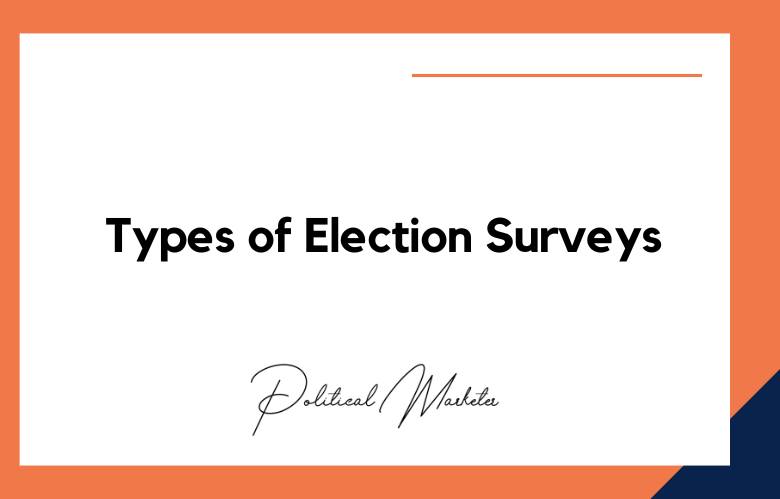Location-based advertising can reach potential voters for your political campaign, but only if used correctly.
The ability to target your message to specific groups of people based on their location can increase engagement and turnout.
We’ll explore how to use location-based advertising for your political campaign to ensure you reach the right people and accomplish your goals.
In politics, getting your message out to the right voters is essential. To do so, it’s crucial to use location-based advertising to ensure that your message is being seen by those who can vote for you.
Whether running for local or national office, this advertising technique can significantly benefit your campaign. Keep reading to learn how to use location-based advertising to reach the right voters for your political campaign.
The Power of Location Data: How Political Campaigns Use It for Advertising?
The world of political campaigning has dramatically evolved over recent years with the rapid growth of digital technology. One of the most significant advancements is using location data for advertising.
By knowing the precise location of their target audience, political campaigns can deliver personalized and hyper-targeted advertisements that resonate with potential voters and enhance their overall engagement.
Political campaigns collect location data through various sources, such as mobile applications, websites, Wi-Fi signals, and GPS data.
This information is then analyzed and segmented into different categories, such as age, gender, socioeconomic status, and political affiliation.
Such data insights enable political campaigns to create personalized advertisements tailored to each category’s needs and interests.
Location-Based Advertising Strategies for Political Campaigns: Best Practices and Examples?
Define the Target Audience:
The first step in any location-based advertising campaign is to define the target audience. Political campaigns typically target voters in a specific geographic area, so it is essential to identify where these voters are located. The target audience’s demographics, such as age, gender, and income level, must also be considered.
Select the Right Location:
Once the target audience has been defined, the next step is selecting the right campaign location. The campaign should be located in an area with a high concentration of potential voters, and the site should be accessible and visible to likely voters.
Choose the Right Advertising Medium:
The next step is to choose a suitable advertising medium for the campaign. Location-based advertising options include billboards, bus stop ads, and street team marketing. Selecting an option that will reach the most significant number of potential voters in the target area is essential.
Develop Creative and Compelling Advertisements:
Once the advertising medium has been selected, it is time to develop creative and compelling advertisements for the campaign. The ads should grab attention and persuade potential voters to support the candidate. They should also be relevant to the target audience and reflect the campaign’s values.
Test and Evaluate Advertising Materials:
Testing and evaluating all advertising materials is essential before launching a location-based advertising campaign. This includes conducting focus groups or surveys with potential voters in the target area. Testing allows movements to make necessary adjustments before launching a large-scale ad campaign.
Launch the Advertising Campaign:
After testing and evaluating advertising materials, it is time to launch the advertising campaign. The campaign should be established in phases to reach as many potential voters as possible. Monitoring results throughout the campaign and making necessary adjustments as needed is essential.
Evaluate Results Afterward:
After completing a location-based advertising campaign, it is essential to evaluate the results to determine whether or not it was successful. This evaluation should include quantitative (e.g., number of votes received) and qualitative (e.g., feedback from focus groups) data.
Why Should Political Campaigns Use Location Data for More Effective Advertising?
Political campaigns are complicated and expensive, and one critical component of an effective campaign is reaching the right audience with the right message.
Location data collected from smartphones, tablets, and other devices can be a potent tool for helping campaigns achieve their goals.
Location data can help campaigns identify where their target audience is spending their time and what types of activities they are engaging in.
For example, if a campaign targets young urban voters, location data can help them identify the bars, clubs, and coffee shops these individuals will likely frequent.
Armed with this information, the campaign can send targeted ads to individuals near these locations, increasing the likelihood that they will engage with the content.
Maximizing Voter Engagement: How Political Campaigns Can Benefit from Location-Based Advertising?
Maximizing voter engagement is an essential aspect of political campaigns. Location-based advertising can significantly benefit political campaigns by reaching and engaging potential voters.
Location-based advertising is a type of advertising that utilizes the user’s physical location to deliver relevant marketing messages.
Using geo-targeting techniques, political campaigners can segment their audience and deliver targeted messages to potential voters in particular areas.
Location-based advertising can deliver more targeted messaging to voters than traditional advertising techniques.
This technology allows political campaigns to customize their messaging to a specific location’s unique demographics, interests, and behaviors.
For instance, political campaigners can analyze their target audience’s online search habits, buying behavior, and other data to customize messages that resonate with specific individuals.
By doing so, political campaigners can deliver relevant messaging that appeals to their audience, which increases engagement and, most importantly, directs election results.
Location-Based Targeting for Political Campaigns: Tips and Tricks for Successful Advertising?
In the digital age, political campaigns are no longer limited to door-to-door canvassing and TV ads. Today, politicians can leverage the power of location-based targeting in their advertising strategy to reach voters with precision and effectiveness.
This technique allows political campaigns to identify voting trends and behaviors, create voter profiles, and target specific audiences with customized messaging.
To ensure success with location-based targeting, political campaigns should start by defining their target audience based on age range, income level, education level, interests, and voting history.
They should then use location-based data such as GPS and IP addresses to tailor their messaging to the specific area where the target audience resides.
The Role of Location Data in Political Advertising: A Comprehensive Guide?
In recent years, location data has emerged as a powerful tool for political advertisers to target specific groups of voters.
With the increasing use of mobile devices and social media platforms, political campaigns can analyze and utilize location data to gain insights into voter behavior, preferences, and interests.
In this comprehensive guide, we explore the role of location data in political advertising, including its potential benefits and risks.
Firstly, location data can provide valuable information for political campaigns. By tracking individuals’ physical movements, campaigns can gain insights into where voters spend their time and activities.
This information can help candidates tailor their messages and outreach efforts to specific geographic areas, demographics, and interests.
For instance, campaigns can analyze the data to determine which neighborhoods are more likely to be receptive to particular policy issues, which can guide their canvassing efforts and advertising strategies.
Exploring the Benefits of Location-Based Advertising for Political Campaigns?
Location-based advertising can be used to target potential voters in specific areas.
Location-based advertising can be used to target potential voters with specific interests.
Location-based advertising can target potential voters identified as likely to vote for a particular candidate.
Location-based advertising can reach potential voters, which may not be achieved through traditional advertising methods.
Location-based advertising is less expensive than traditional advertising methods, such as television or print ads.
Location-based advertising is more targeted than traditional advertising methods, making it more effective in reaching potential voters.
Location-based advertising can be used to target potential voters with specific messages that are tailored to their interests and needs.
Location-based advertising can be used to track the effectiveness of a campaign’s messages and targeting strategies.
Location-based advertising provides campaigns with valuable data that can be used to improve future campaigns.
Location-Based Advertising Tactics for Political Campaigns: Reaching the Right People at the Right Time?
Political campaigns continue to evolve, shifting towards targeting specific groups of voters with tailored messages.
Location-based advertising has become a critical tool for political campaigns, allowing them to reach voters at the right time and place.
Location-based advertising targets individuals in a specific geolocation. Campaign teams can use data and analytics to determine where voters will be at a particular time and develop targeted advertising strategies to appeal to them.
With this technique, political campaigns can send messages directly to the target audience where they are without having to rely on traditional broadcast methods such as television or radio.
The Impact of Location Data on Political Advertising: Case Studies and Insights?
In recent years, location data has become crucial in political advertising. With the rise of mobile devices and location-based services, political advertisers have found location data to effectively reach voters with targeted messages based on their location, interests, and behavior.
This has led to increased use of location data in political campaigns. Many political organizations invest heavily in data services to capture, analyze, and use location data to inform their advertising strategies.
Case studies have shown how location data has helped political campaigns achieve their goals. For example, during the 2016 US presidential election, the Donald Trump campaign used location data to identify and target swing voters in key battleground states.
Conclusion:
Location-based advertising can be a powerful tool to reach the right voters for your political campaign.
You can maximize the effectiveness of location-based advertising by deeply understanding your target audience and their location, targeting high-traffic areas, developing an engaging message, taking advantage of advanced targeting methods, and monitoring and analyzing results.
With these tips and strategies, you can be sure your message reaches the right people to achieve victory in your political campaign.
Using location-based advertising can significantly benefit your political campaign by ensuring that your message is seen by those who can vote for you.
By defining your target audience, utilizing social media advertising and geofencing technology, personalizing your ads, and analyzing your data, you can create a successful location-based advertising campaign that reaches the right voters. So why wait? Start implementing these techniques today and watch your campaign soar!
Call: +91 9848321284
Email: [email protected]










